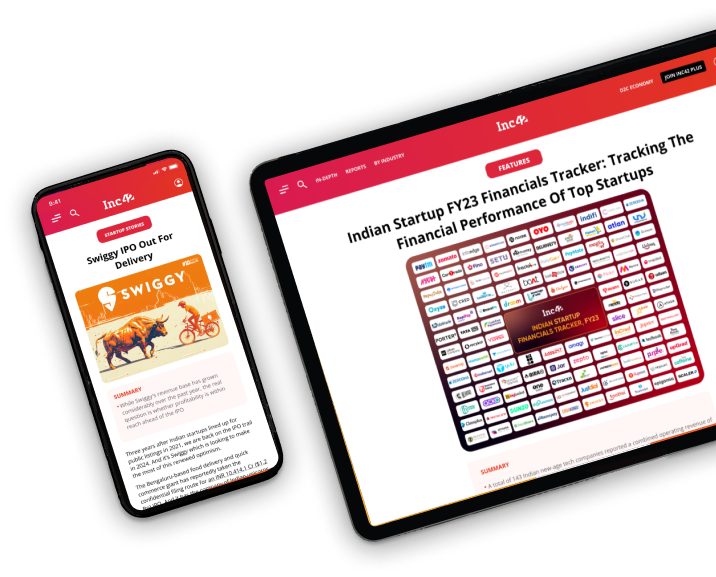
Under the Digital Sky plan, now companies can get clearance for drones which comply with ‘no permission, no take-off’ protocol
Under the policy, the government has demarcated drones to operate in areas demarcated as green and yellow zones
The NPNT condition comes as blow for drones from China’s DJI and France’s Parrot
On August 15, when India celebrated its 74th Independence Day, the country’s drone policy silently took a giant leap. Now, over 70% of India’s landmass of 3.28 Mn sq Km is open for drones to operate. Under the Digital Sky plan, companies can now get single-window clearance for drones which comply with India’s ‘no permission, no take-off’ (NPNT) protocol to operate in areas demarcated as green and yellow zones.
However, drone flights over urban areas, near defence and strategic installations, airports and border areas, which are categorised as red zones, will need clearances from relevant security agencies before take-off, as per an ET report.
The move also comes ahead of the Phase 1 launch of the Digital Sky drone platform, planned for October 2. As envisioned in the Drone Regulations 1.0, the Digital Sky programme will bring airspace management, post-flight data submission and other features to the government’s drone flight management.
Big Push For Drone Startups
The opening up of green and yellow zones comes as India’s drone industry, which can now manufacture or purchase NPNT drones. So far, the industry has been holding out from making the switch, given the lack of permissions through the platform.
Currently, just about 40 drone startups are active in India. Over 90% of them are startups that do not have the luxury of burning cash on trials and experimental runs in this regulatory uncertainty. Moreover, the lack of governmental support is a crucial growth hurdle for drone startups as this has limited funding for the sector.
This is more evident in the “Drone Technology: India Opportunity Report 2019”, by DataLabs by Inc42. According to the report, the total funding raised by drone startups in India from 2014 to 2018 was just $16.56 Mn which accounts for a mere 2.26% of the total deeptech funding ($732 Mn) in this period.
How The ‘No Permission, No Take-off’ Protocol Works?
- A drone user will have to install the Digital Sky App provided by DGCA
- Submit the pilot registration number with all the details of the pilot
- Submit UAV/drone UIN number with all the details
- Request for permission before flying
- Current location is transmitted to the server
- The server checks whether its green zone, yellow zone or red zone
- If everything seems OK then the permission is sent with a notification to the user app
Another Digital Strike On China?
The NPNT condition comes as a deadly blow for drones from China’s DJI and France’s Parrot, which will become illegal as they are not compliant with NPNT. Besides these, consumer-grade drones are also being imported by individuals from China due to the price advantage.
Speaking to Inc42, Vipul Singh, cofounder and CEO of Aarav Unmanned Systems said the flux in Digital Sky is typical of a government initiative. “The tender was recalled and revised. Now the contract is to be given to someone for the development and maintenance of the Digital Sky.”
Drone Tech Flying High In India
In May 2020, waking up to the use of drones in the fight against Covid-19, the ministry of civil aviation and directorate general of civil aviation (DGCA) launched the GARUD portal. The platform provides fast track exemptions to government agencies for using drones in their operations against the pandemic.
GARUD or ‘Government Authorisation for Relief Using Drones’ was supposedly developed by the National Informatics Centre in eight days.
Drones were also extensively used by state governments to deliver essentials during the pandemic. Maharashtra partnered with California-based medical product delivery company Zipline to launch a logistics network of autonomous drones for delivery services across the state. The drones will be used to make on-demand deliveries of blood products, vaccines and life-saving medications.
Meanwhile, hyperlocal delivery platform Dunzo is also warming up to the idea of using drones with the help of management consulting firm Alternative Global India (AGI). This will be the first step to turn Dunzo’s delivery dream into reality.
Bengaluru-based B2B ecommerce startup ShopX has also collaborated with aerospace and robotics company Omnipresent, to start its last-mile drone delivery trial from September 1.
In a press statement, ShopX and Omnipresent said that it has developed a drone delivery system called ‘AirTrain,’ which would bridge the logistics gap from the warehouses to retail outlets in a seamless manner. With this, small retailers and kirana stores will be able to choose ‘Drone Delivery’ as an option and get a wide range of products delivered in 30-60 minutes.































 Ad-lite browsing experience
Ad-lite browsing experience